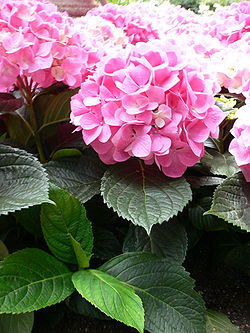| Hydrangeaceae | |
|---|---|
 | |
| Hydrangea macrophylla , a member of the subfamily Hydrangeoideae | |
 | |
| Fendlera rupicola , a member of the subfamily Jamesioideae | |
| Scientific classification | |
| Kingdom: | Plantae |
| Clade: | Tracheophytes |
| Clade: | Angiosperms |
| Clade: | Eudicots |
| Clade: | Asterids |
| Order: | Cornales |
| Family: | Hydrangeaceae Dumort. [1] |
| Genera | |
| Synonyms [2] | |
| |

Hydrangeaceae is a family of flowering plants in the order Cornales, with a wide distribution in Asia and North America, and locally in southeastern Europe. [3]